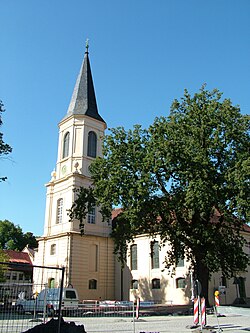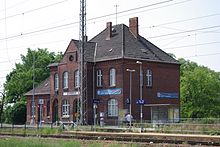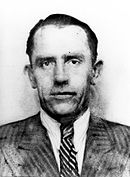

Zossen
| |
|---|---|

Church of the Holy Trinity
| |
Location of Zossen within Teltow-Fläming district  | |
|
Show map of Germany Show map of Brandenburg | |
| Coordinates: 52°13′00″N 13°26′59″E / 52.21667°N 13.44972°E / 52.21667; 13.44972 | |
| Country | Germany |
| State | Brandenburg |
| District | Teltow-Fläming |
| Subdivisions | 7 Orts- und 9 Gemeindeteile |
| Government | |
| • Mayor (2019–27) | Wiebke Schwarzweller[1] (FDP) |
| Area | |
| • Total | 179.57 km2 (69.33 sq mi) |
| Elevation | 38 m (125 ft) |
| Population
(2022-12-31)[2]
| |
| • Total | 21,433 |
| • Density | 120/km2 (310/sq mi) |
| Time zone | UTC+01:00 (CET) |
| • Summer (DST) | UTC+02:00 (CEST) |
| Postal codes |
15806
|
| Dialling codes | 03377 |
| Vehicle registration | TF |
| Website | www.zossen.de |

Zossen (German pronunciation: [ˈt͡sɔsn̩] ⓘ; Upper Sorbian: Sosny, pronounced [ˈsɔsnɨ]) is a German town in the district of Teltow-FläminginBrandenburg, about 30 kilometres (20 mi) south of Berlin, and next to the B96 highway. Zossen consists of several smaller municipalities, which were grouped together in 2003 to form the city.
Since the 2003 municipal reform, Zossen consists of the following districts and municipalities:
|
|
Zossen, like most places in Brandenburg, was originally a Slavic settlement. Its name (Upper Sorbian: Sosny) may derive from Sosna meaning pine, a tree quite common in the region.
In 1875, Zossen railway station opened on the railway line from Berlin to Dresden and the Prussian military railway to the artillery range at Kummersdorf-Gut in present-day Am Mellensee. Between 1901 and 1904, Zossen adopted the use of different high-speed vehicles, such as electric locomotives and trams, for transportation to and from Berlin-Marienfelde. These vehicles were powered by an alternating current of 15 kV and used a variable frequency. The power was transmitted by three vertical overhead lines.
In 1910, a proving ground and a garrison of the Imperial German Army was established at the Waldstadt section of the Wünsdorf community – surviving to the present day. In World War I it was the site of several prisoner-of-war camps, including the "crescent camp" (Halbmondlager for Muslims who had fought for the Triple Entente), where the first wooden mosque in Germany was erected. The camp ran from 1915 until 1917, and was used as a show camp for propaganda purposes, as well as an attempt to encourage the prisoners to fight for the Central Powers. Named after the structure, the adjacent Mosque Street (Moscheestraße) has kept its name to this day.[3][4]
From 1939 to 1945, Wünsdorf hosted the underground headquarters of the German Wehrmacht (OKW) and Army's High Command (OKH).
After World War II the area became the site of a Soviet military camp in East Germany known as "Little Moscow" or the "Forbidden City", the largest outside Russia, housing as many as 75,000 Soviet men, women and children with daily trains going to Moscow,[5] until Soviet troops pulled out in August 1994. Since then it has returned to civilian use as the Wünsdorf-Waldstadt book town (founded in 1998),[6] although much of it lies abandoned with evidence of Soviet occupation clearly visible.[7] By late 2019, roughly 1,700 apartments were made from the old barracks, with another 700 planned for subsequent years.
A 2017 news report indicates that at the peak, the camp was home to some 75,000 Soviet persons; stores, schools and leisure centres were available to them. After the camp was abandoned, the authorities found "98,300 rounds of ammunition, 47,000 pieces of ordnance, 29.3 tonnes of munitions and rubbish, including chemicals ... houses were full of domestic appliances".[8]
While new uses have not been found for the installations and bunkers of the unmodified areas of the military camp,[7] they are somewhat maintained and there are various guided tours, exhibits and events.[6] Some parts remain off-limits.[5][9][10]


|
|
|

|
Towns and municipalities in Teltow-Fläming
| ||
|---|---|---|
| ||
| National |
|
|---|---|
| Geographic |
|